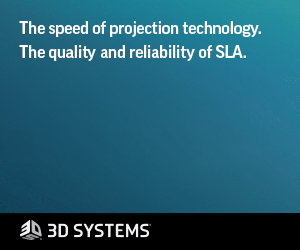UW-Madison Engineers 3D Print RAM Devices in Zero Gravity with NASA Funding
Engineers from the University of Wisconsin-Madison (UW-Madison) 3D printed RAM (Random Access Memory) device units in zero gravity to show that electronic components can be produced in space. This capability is crucial for long-duration space missions, where relying on Earth for replacement parts isn’t practical. Funded by a $508,282 award from NASA’s Marshall Space Flight Center, this project demonstrates the potential of manufacturing RAM in space, helping astronauts repair and maintain their equipment more effectively, which is essential for the success of extended NASA missions.

Among the first in-space manufacturing experiments, NASA Astronaut Barry Wilmore holds a ratchet wrench created in 2014 with the 3D printer aboard the ISS. Image courtesy of NASA.
Led by Assistant Professor Hantang Qin from UW-Madison’s Industrial and Systems Engineering Department, the team accomplished this feat during a parabolic test flight at Fort Lauderdale International Airport in March 2024. Conducted on G-Force One, a modified Boeing 727 operated by Zero Gravity, the investigation sought to initiate the development of in-space manufacturing for essential electronic components like semiconductors, actuators, and sensors. A crucial milestone for future long-duration space missions, in-space manufacturing offers a solution by allowing astronauts to produce necessary components on demand, reducing the need for extensive cargo and storage space.
Traditional 3D printing relies on gravity to extrude materials from a nozzle. However, in space, gravity cannot be relied upon. To address this, Professor Qin’s lab developed an electrohydrodynamic (EHD) printing process. This technique uses an electrical force to drive the flow of liquid materials through an extremely thin nozzle, about 30 micrometers in diameter. This method allows for precise control, creating nanoscale patterns even in zero gravity.
“Under this small scale, the surface tension will prevent the liquid from flowing out from this nozzle. And then we apply this electrical force to break out of this surface tension force,” says Qin. “With traditional 3D printing, nozzle size essentially determines droplet size, but using our printing system, we can make the droplet way smaller than the size of the nozzle. Given a 2-micrometer nozzle, we can make a nanoscale pattern. That’s the huge advantage of this.”
The team faced technical challenges during their first two parabolic test flights when engine vibrations interfered with the printer’s calibration sensors. After intensive troubleshooting and rewriting system code in zero gravity to compensate for the vibrations, graduate student Pengyu Zhang fixed the glitch.
On their final test flight, the seven researchers successfully printed over a dozen RAM units using zinc oxide, a semiconducting ink, and several more using polydimethylsiloxane, an insulating polymer ink.
According to the researchers, although they could see their printer was working as they floated around the plane’s cabin, they couldn’t confirm their results on the micro- and nanoscales until huddling around a microscope in their makeshift research lab set up in a hangar at the airport.
“We got a good feeling when we were in the air, and the stages were working,” said Khawlah Alharbi, a doctoral student who was in the air for two of the test flights. “When the results came out, we were really satisfied and happy and excited to move on with our research.”
Meanwhile, doctoral student and NASA doctoral researcher Rayne Wolf, one of the team leads, emphasized the importance of these experiments, stating, “A lot rides on these experiments.” The successful test flights marked a significant milestone, proving that EHD printing can function effectively in zero-gravity environments. However, Qin says the technology has advantages beyond its ability to function in zero-gravity environments.
The UW-Madison team plans to return to Florida for additional test flights in August and November 2024. These tests will integrate their EHD technology into an industry partner’s multi-tool 3D printer, progressing from printing individual units to complete semiconducting devices. Their ultimate goal is to deploy this technology on the International Space Station (ISS), marking a major step forward in space manufacturing capabilities.
Collaborating with researchers from Iowa State University (ISU), Arizona State University, Intel, and other industry partners, the UW-Madison team is leading a powerful project. In fact, ISU, which received a $100,000 sub-award, is preparing silver nano ink and oxide ink for future flight tests. The ISU team is also assisting with software development, providing on-ground technical support during flights, and participating in creating a real-time control algorithm for EHD printing.

UW-Madison researchers 3D print RAM device units in zero gravity. From left to right: Khawlah Ahmad Alharbi, Xuepeng Jiang, Renjie Nie, Hantang Qin, Rayne Wolf, Pengyu Zhang, and Jacob Kocemba. Image courtesy of University of Wisconsin–Madison.
UW-Madison has a long-standing relationship with NASA, with multiple awards and fellowships granted to its researchers and students. NASA has recruited many graduates from UW-Madison’s research groups, and graduate students have received prestigious fellowships for advanced space-related research. The Space Science and Engineering Center (SSEC) at UW-Madison also collaborates with NASA on projects like wildfire tracking and monitoring using satellite data. Like the others, the latest EHD printing project strengthens the university’s relationship with the space agency and further advances in in-space manufacturing technology.
Subscribe to Our Email Newsletter
Stay up-to-date on all the latest news from the 3D printing industry and receive information and offers from third party vendors.
You May Also Like
BellaSeno’s Pioneering 3D Printing Facility for Medical Implants to Open in 2025
German 3D printing medical implant pioneer BellaSeno plans to launch a fully automated production facility in Australia by mid-2025 to make its resorbable soft tissue and bone reconstruction implants. By...
Daring AM: From 3D Printed Gun Files to Criminal Backstreets
3D printed guns are a growing trend that won’t go away, making their way into headlines with increasing frequency. While the number of 3D printed firearms isn’t nearly as high...
Handheld, Chip-Based 3D Printer Demonstrated in DARPA-Funded Project
In a study funded by organizations including the National Science Foundation (NSF) and the Defense Advanced Research Projects Agency (DARPA), researchers at Massachusetts Institute of Technology (MIT) and University of...
BigRep Launches High-Temperature 3D Printers via HAGE3D Acquisition
In the fall of 2023, large-format 3D printing leader BigRep announced its acquisition of Austria-based HAGE3D, which also makes large-platform, fused filament fabrication (FFF) systems. This enabled BigRep to offer...




































